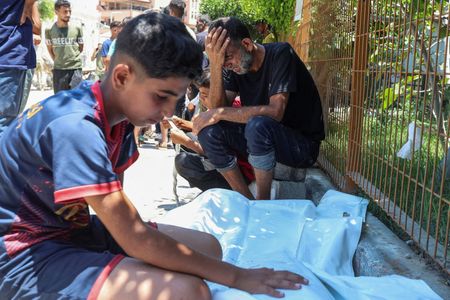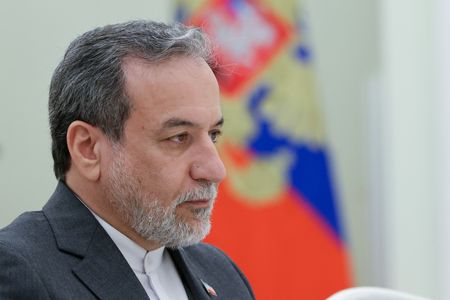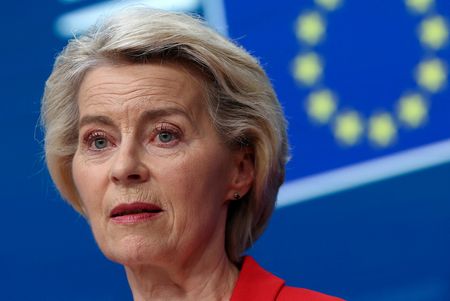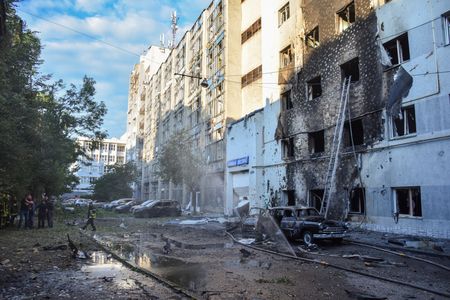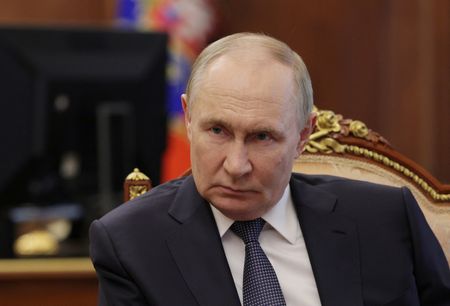CAIRO/JERUSALEM/GAZA (Reuters) -Talks aimed at securing a ceasefire in Gaza are stalling over the extent of Israeli forces’ withdrawal from the Palestinian enclave, Palestinian and Israeli sources familiar with the negotiations in Doha said on Saturday.
The indirect talks over a U.S. proposal for a 60-day ceasefire are nonetheless expected to continue, the sources said.
In Gaza, medics said 17 people trying to get food aid were killed on Saturday when Israeli troops opened fire, the latest mass shooting around a U.S.-backed aid distribution system that the U.N. says has resulted in 800 people killed in six weeks.
Witnesses who spoke to Reuters described people being shot in the head and torso. Reuters saw several bodies of victims wrapped in white shrouds as family members wept at Nasser Hospital. The Israeli military said its troops had fired warning shots, but that its review of the incident had found no evidence of anyone hurt by its soldiers’ fire.
Delegations from Israel and Hamas have been in Qatar for a week in a renewed push for an agreement which envisages a phased release of hostages, Israeli troop withdrawals and discussions on ending the war.
U.S. President Donald Trump, who hosted Israeli Prime Minister Benjamin Netanyahu over the past week, had said he hoped for a deal soon. But the Israeli and Palestinian sources described longstanding issues that remain unresolved.
A Palestinian source said that Hamas had rejected withdrawal maps which Israel had proposed that would leave around 40% of Gaza under Israeli control, including all of the southern area of Rafah and further territories in northern and eastern Gaza.
Two Israeli sources said Hamas wanted Israel to retreat to lines it held in a previous ceasefire before it renewed its offensive in March.
The Palestinian source said matters regarding aid and guarantees on an end to the war were also presenting a challenge. The crisis could be resolved with more U.S. intervention, the source said.
Hamas has long demanded an agreement to end the war before it would free remaining hostages; Israel has insisted it would end the fighting only when all hostages are released and Hamas is dismantled as a fighting force and administration in Gaza.
SHOOTING
Saturday’s reported mass shooting near an aid distribution point in Rafah was the latest in a series of such incidents that the United Nations rights office said on Friday had seen at least 798 people killed trying to get food in six weeks.
“We were sitting there, and suddenly there was shooting towards us. For five minutes we were trapped under fire. The shooting was targeted. It was not random. Some people were shot in the head, some in the torso, one guy next to me was shot directly in the heart,” eyewitness Mahmoud Makram told Reuters.
“There is no mercy there, no mercy. People go because they are hungry but they die and come back in body bags.”
After partially lifting a total blockade of all goods into Gaza in late May, Israel launched a new aid distribution system, relying on a group backed by the United States to distribute food under the protection of Israeli troops.
The United Nations has rejected the system as inherently dangerous and a violation of humanitarian neutrality principles. Israel says it is necessary to keep militants from diverting aid.
The war began on October 7, 2023, when Hamas-led militants stormed into Israel, killing about 1,200 people and taking 251 hostages into Gaza. At least 20 of the remaining 50 hostages there are believed to still be alive.
Israel’s campaign against Hamas has killed more than 57,000 Palestinians, according to Gaza health authorities, displaced almost the entire population of more than 2 million people, sparked a humanitarian crisis and left much of the territory in ruins.
(Reporting by Nidal al-Mughrabi in Cairo, Maayan Lubell and Emily Rose in Jerusalem, Ramadan Abed in Gaza; Editing by William Maclean and Peter Graff)

